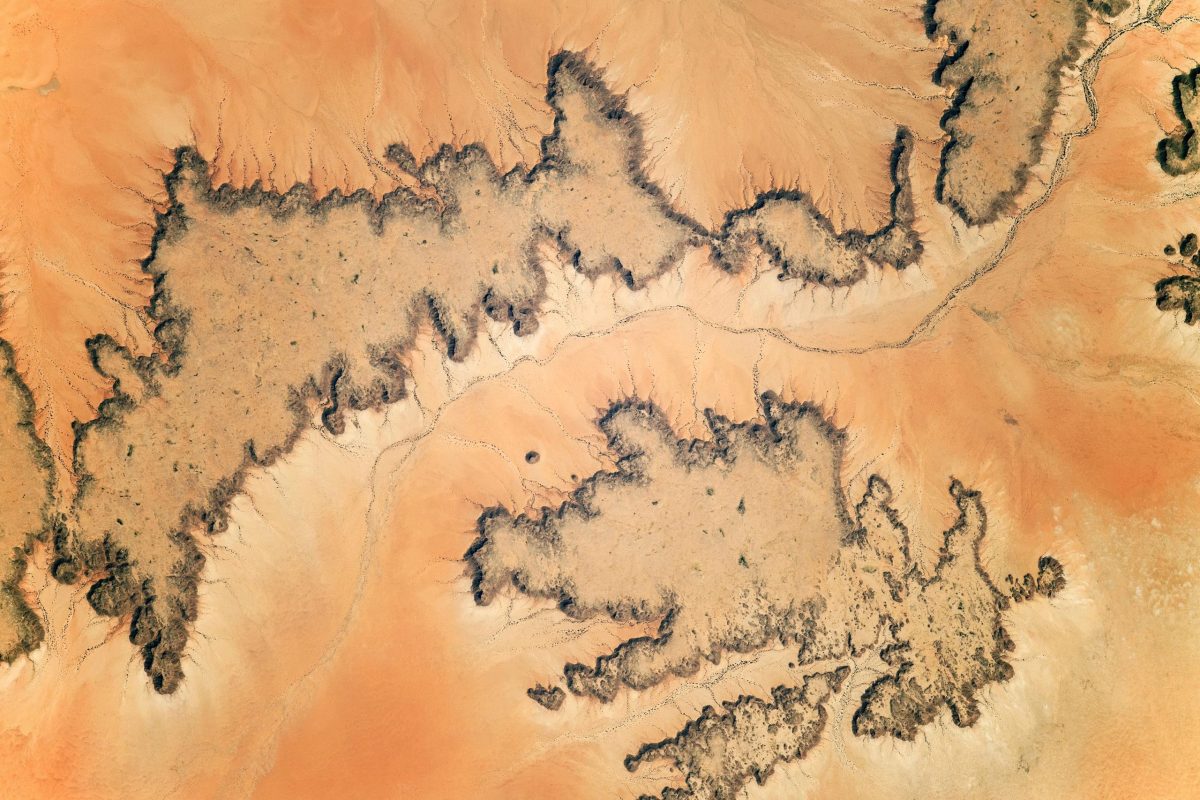Photograph taken by astronauts aboard the International Space Station on December 25, 2019, shows dark surfaces in the hyper-arid eastern Sahara Desert in Sudan. (Click on the image to see a more detailed view.)
Dark, flat-topped mesas stand out amid the surrounding lighter-toned landscape in northwest Sudan.
This detailed photograph, taken by astronauts aboard the International Space Station (ISS), shows dark surfaces in the hyper-arid eastern Sahara Desert in Sudan. These surfaces are flat-topped mesas that rise 230–460 feet (70–140 meters) above the surrounding lighter-toned landscape. The mesas are defined by vertical cliffs cut into by numerous small gullies, producing a heavily indented pattern. For scale, the smaller mesa measures about 6 miles (10 kilometers) long.
A mesa is an isolated, flat-topped elevation, ridge, or hill that is surrounded on all sides by steep escarpments and stands distinctly above a surrounding plain.
The bed of a dry river winds across the middle of the image. A dotted pattern of trees and clumps of bushes follow the line of the riverbed, indicating that roots are reaching the subsurface water.
Analysis of the height of the mesas and the rock units exposed in the cliff faces allows geologists to interpret the evolution of the area’s landscape. It is possible to conclude that the rock layer forming the two mesas was more extensive in the past, and that it has been stripped away by river and wind erosion to produce the younger, light-toned surface seen today.
Eroded desert landscapes with strongly contrasting darker and lighter-toned surfaces result from both physical and chemical weathering processes and are a common landscape pattern in this part of the Sahara Desert. Geologic maps indicate that the entire area is a single rock type known as the Nubian Sandstone, which is one of the largest fossil water aquifers in the world.
Astronaut photograph ISS061-E-98063 was acquired on December 25, 2019, with a Nikon D5 digital camera using a focal length of 800 millimeters. It is provided by the ISS Crew Earth Observations Facility and the Earth Science and Remote Sensing Unit, Johnson Space Center. The image was taken by a member of the Expedition 61 crew. The image has been cropped and enhanced to improve contrast, and lens artifacts have been removed. The International Space Station Program supports the laboratory as part of the ISS National Lab to help astronauts take pictures of Earth that will be of the greatest value to scientists and the public, and to make those images freely available on the Internet. Caption by Justin Wilkinson, Texas State University, JETS Contract at NASA-JSC.
Share your story or advertise with us: Whatsapp: +2347068606071 Email: info@newspotng.com












